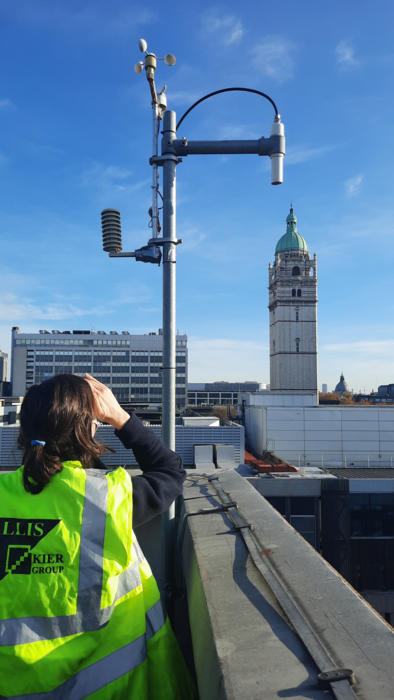Measurements of London’s atmosphere show the city is releasing more of the potent greenhouse gas methane, primarily from natural gas leaks.
The measurements, performed by researchers at Imperial College London, show that most methane released in London is the result of natural gas infrastructure leaks, rather than landfill sites as previously thought.
Methane is a more potent greenhouse gas than carbon dioxide and produces a stronger warming effect, but it stays in the atmosphere for less time. Methane emissions worldwide are a major concern and reducing them would help tackle climate change.
The results of the new study, published in Atmospheric Chemistry and Physics, show London’s natural gas infrastructure is leaking more methane than estimated, and the cumulation of lots of small leaks is adding up to considerable extra methane emissions from the city.
First author of the study and Science and Solutions for a Changing Planet Doctoral Training Partnership student Eric Saboya, from the Department of Physics at Imperial, said their “study shows that London is emitting more methane than we thought, but because we’ve been able to pinpoint the source of much of this extra methane, we have a clear direction to reduce emissions.”
“Previous estimates suggested that landfill sites in London were the biggest emitters of methane, but our study shows that natural gas leaks are a bigger problem. Mitigation strategies can now be directed where they are most needed, such as upgrading leaky old metal pipes with newer plastic versions.”
Major sources of methane include agriculture, landfill and waste sites, natural gas infrastructure and natural sources such as wetlands.
Estimates of methane emissions are typically based on a ‘bottom-up’ approach, where emissions were calculated based on statistics. For example, cows produce some methane, so knowing on average how much methane each cow produces and multiplying this by the number of cows in the UK gives an estimate of the emissions from cows for the country as a whole.
The new study instead used a ‘top-down’ approach of sampling the actual atmosphere in London, from equipment installed on Imperial’s South Kensington campus, to check if the measurements agreed with the ‘bottom-up’ methane emissions.
Using continuous measurements from March 2018 to October 2020 and models of atmospheric transport, the team compared bottom-up estimates with the measured data. As well as the concentration of methane in the local atmosphere, they were able to tell the source of the methane thanks to small but measurable differences between the properties of methane from different sources.
These figures were compared to two emissions ‘inventories’—bottom-up estimates. While one inventory (EDGAR) correlated relatively well with the measurements in total methane concentration, the other (UK National Atmospheric Emissions Inventory, UK NAEI) appeared to underestimate methane emissions by 30-35 percent.
Both inventories underestimated the fraction of emissions from natural gas. For example, the NAEI inventory suggested natural gas accounted for around 25 percent of the methane measured in South Kensington, whereas the real measurements show the reality is closer to 85 percent.
Study co-author Dr. Giulia Zazzeri, from the Department of Physics at Imperial, said that “this is not just a London problem—cities such as Paris and Boston have shown similar results—but the local make-up of methane sources is different for every city, showing the power of these measurements for determining where mitigation should be directed to help cities reduce their greenhouse gas emissions.”
Study co-author Dr. Heather Graven, from the Department of Physics at Imperial, added that “the UK was one of over 100 countries who pledged to reduce methane emissions 30 percent by 2030 as part of the recent COP26 meeting in Glasgow. Since methane is emitted by various sources that are difficult to estimate, atmospheric measurements like these are key to tracking the UK’s progress on this pledge.”
More information:
Eric Saboya et al, Continuous CH4 and δ13CH4 measurements in London demonstrate under-reported natural gas leakage, Atmospheric Chemistry and Physics (2021). DOI: 10.5194/acp-2021-606
Provided by
Imperial College London
Citation:
Study shows London produces up to a third more methane than estimates suggest (2022, February 17)


